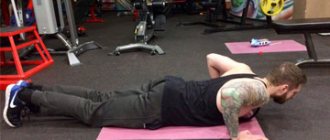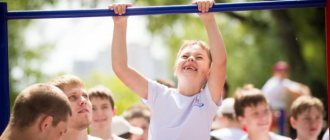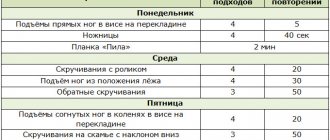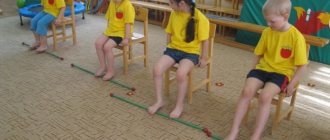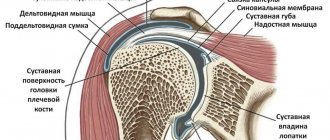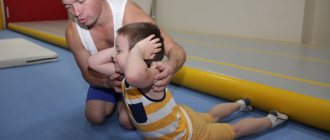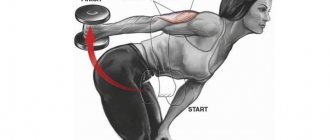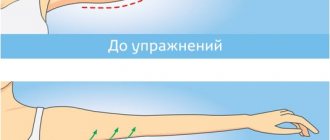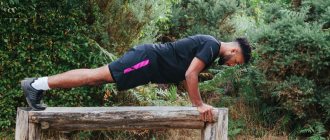09 June 2016
Averyanova Sveta
A child’s good physical shape is a reason to be proud. Performing bright acrobatic elements gives you self-confidence and helps you gain authority among your peers. The wheel is one of my favorite exercises, spectacular and at the same time easy to perform even for a beginner. Let's discuss how to teach a child to do a cartwheel.
What is this exercise and why do it?
As with any exercise, the wheel has a number of advantages that make it worth mastering this element. It’s worth learning how to make a wheel from scratch because of:
- Positive effect on coordination and balance.
- Uniform strengthening of all body muscles, joints and ligaments.
- Vestibular apparatus training.
- Increases flexibility and mobility, improves spinal health by strengthening the back extensors and deep muscles.
It is worth understanding that doing a gymnastic wheel in everyday life is not always relevant, since this element relates to specialized movements. However, it is a simple and effective movement that will be useful for both demonstrating fitness and strengthening muscles.
Preparation
Before learning how to do a cartwheel, you need to prepare the place and yourself.
- Preparing the site. This is a prerequisite, since learning how to make a wheel without the appropriate space simply will not work. And the corresponding place, this place is spacious, without unnecessary objects around, high enough (so as not to knock over the chandeliers with your feet). It’s good if you have the opportunity to study in a gym that also has mats. Nothing should restrict movement, no sharp corners around. A free wall will come in handy.
- Preparing yourself.
- Choice of clothes. It should not restrict movement or bother you with excessive bagginess. It’s good if these are short elastic shorts or lacings, a fitted elastic top (T-shirt) that will not roll off you in the “upside down” position. As for shoes, the choice depends on the venue. If these are smooth floors, then choose shoes that do not slip on it.
- Muscles. Warm up before moving on to the exercise, warm up, and do a set of preparatory exercises.
What muscles work
When performing the exercise, almost all muscles of the body are involved. Some work as stabilizers, given the inertial nature of the movement. The main burden falls on:
- Shoulders.
- Hands.
- Erector spinae muscles.
- Oblique and rectus abdominis muscles.
- Hips.
- Calf muscles.
Possible dangers
Acrobatics (and the “wheel” is an acrobatic element) is a traumatic activity. If safety precautions are not followed, sprains, injuries and bruises may occur.
Under no circumstances should you learn to spin a “wheel” outside on the asphalt or lawn in a park. This is fraught with bruises and injuries. Even if the surface seems soft enough, there may be shards of glass, nails or other dangerous objects in the ground or grass. If a child falls with his full weight on such an object, he may be injured.
The most suitable place for the gymnastic exercise “wheel” is a gym with mats. If you decide to exercise at home, you need to free up space (at least 3 m by 4 m). And also choose a room with linoleum, carpet or laminate, but not tiles, to avoid injury if you fall.
Lead-up exercises
The only way to master the element as quickly as possible is to perform lead-in exercises for the wheel. The main ones include:
- Handstand with feet on a pedestal is an entry-level exercise that helps keep your body weight on your arms and shoulders.
- Swallow on one leg with a transition to both hands (from the swallow, take support with your hands on the floor with a straight back).
- Push-ups upside down against a wall - in fact, this movement helps to master the main and most difficult phase of the wheel - the transition from a standing position to your hands and fixing the body in an upside-down position. At first, the wall serves as a good barrier and helps dampen inertia.
- Throwing your legs in the air while placing your hands on the floor. The movement helps bring the athlete past the sticking point, where inertia will drive the body forward.
- Training the wheel itself.
Conditions for proper learning
In order to begin learning an acrobatic maneuver competently and without negative consequences, it is important to understand how to properly prepare for it and take into account several nuances. The most important features include:
- Physical health and absence of medical contraindications. These include significant weight with relative weakness of the arms.
- Psychological mood. It is important to understand that there will be failures, and not everything will work out the first time.
- Availability of sufficient free space. It’s better to start practicing on the beach: soft sand and the absence of disturbing objects will reduce the likelihood of injury. You can learn to make a wheel at home, but in a large spacious room, putting away all fragile and breakable objects.
- Preliminary physical preparation, it is advisable to do exercises every day, strengthen muscles and do stretching exercises. Not every body is ready for a revolution and emphasis on the hands.
- Loose and comfortable clothing that does not restrict movement and does not interfere with performing an acrobatic element.
The preparation process is an important stage, without which training may not give the desired result or lead to injury. Therefore, you should prepare carefully and not neglect the recommendations.
Exercise wheel technique
The classic version of performing an element in gymnastics looks like this:
- To begin, imagine a straight line on the floor along which the movement will be performed.
- Place your leading leg forward and raise your arms up. It is important not to stand sideways along the line, and turn your body slightly to the side, this will increase stability.
- Transfer your body weight to your front (leading leg), tilt your body down while lifting your back leg off the floor.
- Place both hands on the floor. Once your body weight is in your palms, lift your leading leg off the floor. Push off with your toes to increase momentum.
- Move your legs over the top, and then transfer your support to them again. First, the foot that was behind in the starting position touches the floor.
Preparing the training area
The ideal place to learn absolutely any acrobatic tricks is a gymnastics or acrobatic hall. There you can find soft mats for accidental falls, and an instructor who will help you learn the element. But it is not always possible to successfully find such an option. Then a sandy beach is suitable for training - soft sand will help absorb sudden falls. An area with soft grass or soil in nature is also suitable, but dangerous objects from stones to broken glass can be found in the grass. In autumn and winter, you can try training on a snowdrift or a pile of leaves. It is not recommended to practice on asphalt, especially for beginners - bruises, scratches and bruises will definitely not be avoided.
Variation of the wheel forward exercise
A more complex option. Suitable only for those who have learned how to do a side wheel. It puts much more strain on the lower back, so additional training may be required to strengthen the area and prevent the risk of injury.
Technique:
- Stand straight, feet shoulder-width apart, arms raised up.
- Begin to bend your knees slightly while moving your body and arms forward.
- Make a sharp push with your toes while straightening your legs. Jump forward so as to give your body inertia and transfer the support to your hands.
- After fixing your palms to the floor, move your legs over the top. Gradually bend your back, forming an arch like a bridge exercise.
- Land your heels softly on the floor, then push hard with your arms to rise to a straight position.
The most dangerous moments with this technique are arching in the lower back and landing of the heels on the floor in the final phase. They require careful development.
Precautions when training
When trying to make a wheel yourself for the first time, you need to do everything carefully and not rush. Although many would like to know how to learn how to make a wheel in 1 day, it is still better to allocate a little more time for this. In addition, at first it is worth enlisting the support of another person who can support and insure.
You should always start the wheel with the leading leg; it is stronger and will set the pace of movement of the whole body. When performing a cartwheel backwards, the leg remains the same. This will help avoid injury.
Don't spend too much time training at one time. 30-40 minutes for the first attempts will be enough, otherwise the body will get tired and muscle memory will stop working anyway. It’s better to train a little bit, but every day. Then the body will gradually master the skill.
Exercise wheel on one arm
The wheel on one hand is considered to be the most difficult option. This is due to the fact that a colossal load falls on the arm and shoulder. At the same time, the remaining muscles are also more heavily loaded, since due to the need to maintain the body position while leaning on 1 arm, more stabilizing muscles are involved in the work.
Technique:
- Stand sideways so that you do a cartwheel to your left. Raise your right hand.
- Raise your left leg and turn it so that your knee points straight to the side.
- Push off sharply with your right foot. Shift your weight to your left leg while simultaneously lifting your right leg and tilting your body (with a straight back) and arm closer to the floor.
- Transfer your weight to your hand. After fixing your palm on the floor, use inertia to move your legs to the other side.
- Try to place the foot of your right foot on the floor as softly as possible, taking support from it. After this, place your left leg and straighten up.
This is the most inertial technique, since in the absence of one support you have to push off harder with your legs to transfer the body and legs.
Body Pre-Workout
When performing the wheel, the arms, legs, back, neck, and abs are involved. It is these muscle groups that need to be given attention. Start preparing in stages so as not to overload the child’s body. You can do this at home. The training order is as follows:
- For beginners and preschool children, daily exercise is suitable. It can include simple exercises: regular and plie squats, bending forward, backward, to the sides, circular rotations of the head and torso, lifting the arms and legs, jumping in place, including raising the arms and bending the knees. Stretch in a sitting position: with your legs wide apart, you need to alternately reach your toes with your fingers, while the chin reaches towards the knee. It will be useful for the back to perform an exercise with arching the back; a basket is suitable for girls, and a bridge is suitable for boys.
- Gradually, more complex exercises can be added to regular exercises: “birch” - a stand on the shoulder blades with vertically raised legs, a bicycle, scissors, abdominal pumping, including lateral, push-ups, longitudinal and transverse splits, plank - this exercise trains all muscle groups. The main condition for success is regular implementation.
- When the muscles have become stronger and the joints have become accustomed to the load, you can try to teach the child more complex gymnastic exercises, such as the wheel.
For convenience, you can watch the video tutorial and follow the trainer’s instructions step by step.
How to Avoid Injury
Many people are afraid to do the cartwheel because of the risk of injuring the child. These concerns are valid and steps should be taken to reduce this risk. We recommend paying attention to the following:
- performing acrobatic exercises is contraindicated for children with any injuries, cardiac disorders, brain diseases, or acute diseases;
- choose the location of your classes wisely, eliminate the possibility of collisions with objects and walls, or a strong blow when falling to the floor;
- the wheel can only be done by a physically developed child who regularly plays sports, take time to prepare and do exercises;
- soberly assess whether the child is able to master the technique of the element; you should not teach a child under 5 years old;
- Insure the child until he confidently performs the exercise;
- fear can prevent you from performing a coup correctly, talk about it, make sure your child is confident in himself;
- If you are not confident in your own abilities, do not start self-study, it is better to consult a specialist.
